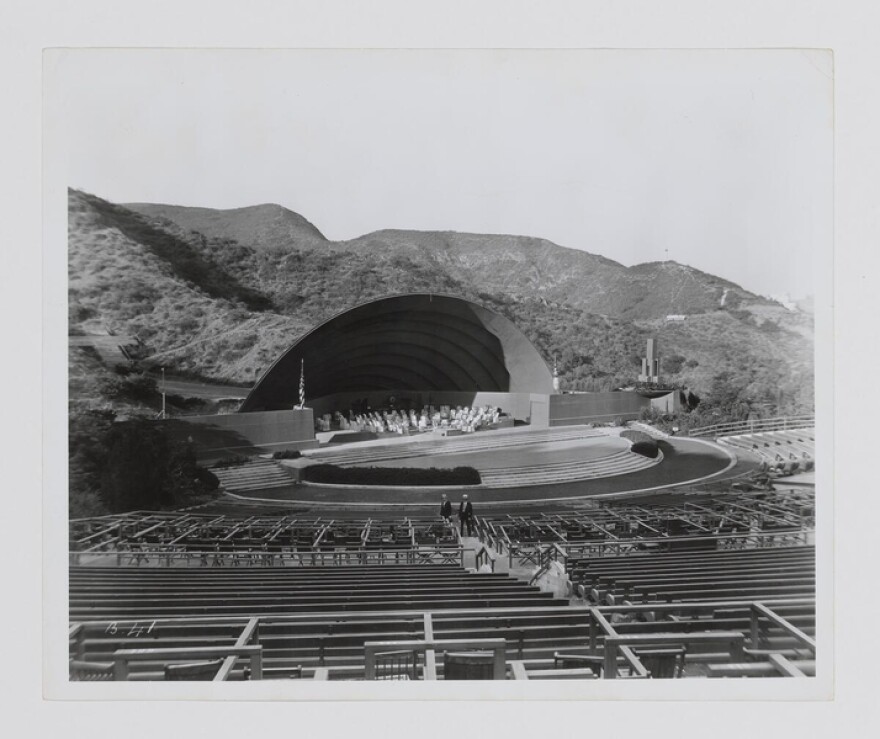Truth matters. Community matters. Your support makes both possible. LAist is one of the few places where news remains independent and free from political and corporate influence. Stand up for truth and for LAist. Make your year-end tax-deductible gift now.
One of Hollywood Bowl's founders wanted only to put on religious plays. How the venue became what it is today

The Hollywood Bowl is more than a century old, so what’s a better time to look back at the venue’s early years – a period that was defined by the unified ambition, and at times the clashing visions, of six of its founding members.
The new exhibition, Building the Bowl: From Dream to Destination, at the Hollywood Bowl Museum explores the space’s first 15 years and tells the stories of the key figures behind its inception.
“The spirit of the Hollywood Bowl survived because people believe in the dream,” Hollywood Bowl Museum director Ljiljana Grubisic said. “The founders never talked about the Hollywood Bowl as just a venue. They described it as our project, our great community movement.”
How the Bowl started
Grubisic said the Hollywood Bowl was founded on what the six core founders saw as the need in L.A. for a “community-based open air cultural enterprise,” as Los Angeles underwent social and cultural changes ushered in by the rapid suburban expansion of the region, the birth of Hollywood, the aircraft and other industries during the 1920s and 1930s.
This group founded the nonprofit organization Theater Arts Alliance in 1919, which purchased the land that eventually became the site for the Hollywood Bowl. “Daisy Dell,” as that plot was known, was chosen for its acoustic properties and secluded location.
On March 27 1921, the L.A. Philharmonic held its Easter Sunrise Service — marking the birth of the venue with that debut. Its first official season, however, didn’t begin until July 1922.
The Exhibit
"The whole concept of the exhibit is to profile [the] individuals, [the] founders that were instrumental in bringing this cultural project together in Los Angeles in the 1920’s,” Grubisic said.
The six individuals were an eclectic mix and are highlighted in the exhibit based on their unique contributions to the venue, Grubisic said. They include the heiress and performer Christine Wetherill Stevenson, who was a major early investor in the Bowl; Frederick W. Blanchard, the venue’s first president, and Florence M. Irish, who steered the venue through the Great Depression and World War II.
Each person came with their own vision for the Hollywood Bowl. Their views diverged on issues ranging from what the open-air amphitheater should look like to its creative identity. Stevenson, Grubisic said, had wanted to stage only religious plays, while others pushed for more open programming.
That conflict eventually led to the departure of Stevenson and the dissolution of Theater Arts Alliance. In its wake, Community Park and Arts Association was formed, which set the artistic course for the venue as we know it today.
"Right there you actually have the the very essence of the Hollywood Bowl as it exists right now," said Grubisic. "It's a community park. It's an open-air venue that was built on that more democratic approach."







